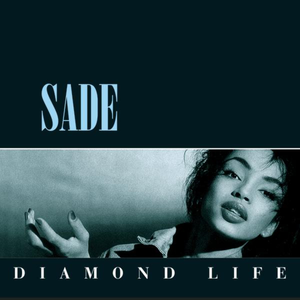When Diamond Life arrived in 1984, it wasn’t just the start of Sade’s career—it was a quiet revolution in a decade known for its bold sounds and bright visuals. At a time when pop was filled with high-energy beats and flashy production, Sade Adu and her band took a very different path. They brought forward a smooth, soulful blend of jazz and R&B that stood out for its calm confidence. This debut album didn’t just introduce a new artist—it introduced a whole new mood to mainstream music. While others turned up the volume, Sade slowed things down, offering something cool, elegant, and deeply personal.
With Diamond Life, Sade wasn’t chasing trends. Instead, the group aimed to create something timeless—music that felt emotionally honest and musically rich. The album is filled with songs about love, trust, and the pressures of modern life, but it delivers them with a soft touch. From the production to the songwriting, everything feels intentional and restrained. Sade’s goal seemed clear: to make music that could soothe, challenge, and connect with people, all without raising its voice.
Sonic Exploration

Diamond Life is a masterclass in polished, understated production. Engineered by Robin Millar, the album was recorded in just six weeks, yet it sounds meticulous and deliberate. Every element—whether it’s a brushed snare, a mellow saxophone, or a lingering bassline—feels like it has room to breathe. The clarity of the mix allows Sade’s voice to sit right at the center, never overpowered, but always supported by carefully layered instrumentation. This production approach reinforces the album’s mood: thoughtful, unhurried, and emotionally precise. It’s not lo-fi or gritty—it’s smooth without being sterile, refined without sounding distant.
One of Diamond Life’s most compelling strengths lies in its restraint. Rather than packing each track with dense layers, the arrangements favor space and simplicity. Stuart Matthewman’s saxophone lines drift in and out with emotional timing, while Paul Denman’s bass grooves are warm and deliberate, anchoring tracks like “Smooth Operator” and “Your Love Is King.” The drums, courtesy of Paul Anthony Cooke, are subtle but effective—often soft, but never lacking in presence. Meanwhile, Sade’s vocals are elegantly phrased and emotionally controlled. She doesn’t belt or show off. Instead, her delivery is intimate, often sounding like a private conversation set to music.
Genre Elements
While Diamond Life is often labeled as soul or R&B, it’s better understood as a quiet storm of influences. Jazz is a major ingredient, particularly in the use of saxophone and chord voicings. There are touches of funk in the rhythm section and hints of pop in the song structures. Even elements of bossa nova and soft rock show up in the background. But what makes the album unique isn’t any single genre—it’s how these styles are blended into something that feels effortless and natural. The band never pushes genre boundaries in a flashy way; instead, they gently bend them into a new shape that would become distinctly “Sade.”
Lyrical Analysis

The lyrics on Diamond Life orbit around love in its many forms—romantic desire, betrayal, longing, and emotional independence. But what sets the album apart is how these themes are delivered with such cool precision. In “Smooth Operator,” Sade sketches a portrait of a globe-trotting heartbreaker with surgical detail, using city names and financial metaphors to underscore the emotional distance in the relationship. On “Frankie’s First Affair,” the focus shifts to infidelity and the pain of naive trust, while “When Am I Going to Make a Living” brings in a sharp social commentary about economic pressure and personal survival.
Sade’s lyrics are often direct, but they never feel flat. There’s a quiet poetry in the way she phrases things, favoring clean lines over metaphor-laden passages. This clarity doesn’t reduce their impact—it enhances it. Songs like “Your Love Is King” manage to feel intimate and grand at once, using repetition and elegant phrasing to heighten emotional stakes. Rather than packing each song with dense symbolism, the lyrics often leave space for the listener to step in and feel the weight of each line.
The emotional tone of Diamond Life is what lingers long after the album ends. There’s a steady, simmering quality to the way Sade handles heartbreak and desire. She doesn’t scream or plead—she reflects. That restraint gives the lyrics even more power. The sadness in “Why Can’t We Live Together” feels lived-in, not performative. The resolve in “I Will Be Your Friend” comes across as genuine comfort rather than empty reassurance. Through her words, Sade invites the listener into a world where emotional complexity is treated with care, and where even pain is delivered with grace.
Cohesion and Flow

One of the most remarkable qualities of Diamond Life is how fluidly its tracks unfold. From the opening notes of “Smooth Operator” to the closing strains of “Why Can’t We Live Together,” the album moves with a quiet confidence. Each song flows naturally into the next, creating a listening experience that feels intentional and well-paced. While there isn’t a strict narrative arc, there is a strong emotional thread. The album opens with cool detachment and glamour, then slowly reveals deeper layers of vulnerability, reflection, and resolve. It feels like a journey—not in a plot-driven sense, but in the gradual unveiling of emotional truths.
Throughout its nine tracks, Diamond Life maintains a firm grip on its mood and message. Whether Sade is singing about romantic disillusionment, economic frustration, or quiet devotion, the tone remains consistent: smooth, measured, and introspective. Musically, the fusion of jazz, soul, and pop is present from beginning to end. There are no sudden shifts in style or tone that disrupt the flow. Even the tempo changes are subtle, guiding the listener rather than jolting them. This unity is part of what makes the album feel timeless—it isn’t just a collection of songs, but a fully formed statement.
For a debut album, Diamond Life shows a rare level of restraint and coherence. The band avoids filler, and each track feels like it belongs in the set. The production choices, lyrical themes, and emotional tone all work together to create a sound world that’s both distinctive and immersive. Rather than chasing variety for its own sake, Sade and her band focused on depth, letting a consistent aesthetic carry the album’s message. The result is a body of work that feels as unified as it is emotionally rich.
Standout Tracks and Moments
“Smooth Operator”
If one track defines Diamond Life, it’s “Smooth Operator.” From the opening saxophone line to the cool, storytelling cadence of Sade’s voice, the song is both an immediate hook and a mission statement. It captures the album’s blend of sophistication and emotional restraint, painting a vivid picture of a charismatic yet emotionally distant figure. The track’s arrangement—lush but never overwhelming—showcases the band’s ability to support Sade’s vocals without overpowering them. It’s smooth, yes, but also subtly biting, with lyrics that cut through the glamour to reveal emptiness beneath the surface.
“Your Love Is King”
This track stands out for its intimacy and warmth. “Your Love Is King” isn’t just about romance—it’s about surrender, vulnerability, and deep emotional presence. The phrasing is slow and deliberate, allowing each word to resonate. The interplay between the saxophone and Sade’s voice creates a soft tension, giving the track a rich emotional undercurrent. It’s one of the purest examples of how the band uses space and minimalism to deepen emotional impact.
“When Am I Going to Make a Living”
Here, Sade turns her gaze outward, addressing the pressures of modern life with a quiet but insistent tone. The lyrics speak to the struggles of working-class ambition and disillusionment, framed by a groove that’s both laid-back and resolute. This song reveals another layer of the album’s themes—one that deals not just with personal heartbreak but with broader questions of purpose and survival. It’s a moment of social consciousness that never feels heavy-handed.
Memorable Moments
Several moments across the album highlight the band’s command of mood and timing. The instrumental break in “Sally,” with its almost gospel-tinged warmth, offers a rare moment of uplift. The whispered vulnerability in “I Will Be Your Friend” provides a gentle contrast to the cooler tones of the earlier tracks. And the cover of “Why Can’t We Live Together” closes the album on a note of weary reflection, using repetition and restraint to make a timeless plea for unity. Even the silences—the moments where the music pulls back—carry emotional weight, allowing space for the listener to reflect.
Artistic Contribution and Innovation

When Diamond Life landed in 1984, it didn’t shout for attention—it seduced it. In a decade driven by synth-pop maximalism, arena rock theatrics, and the flashy birth of MTV culture, Sade’s debut chose the opposite path. The album introduced a new voice in British soul and helped carve out a distinct space in adult contemporary music. While many artists of the time leaned into excess, Diamond Life stood apart by embracing subtlety, nuance, and emotional clarity. It didn’t just fit into a genre—it reshaped how smooth soul and jazz-pop could function in a mainstream setting.
A Fresh Take on Genre Fusion
Sade and her band created something quietly groundbreaking by blending styles with elegance and restraint. The album didn’t fuse genres through obvious contrast; it merged them into a seamless whole. Jazz harmonies, soul grooves, soft rock textures, and touches of Latin rhythm all coexist without friction. This smooth integration laid the groundwork for what would later be called the “sophisti-pop” sound, influencing artists well beyond the 1980s. Sade’s ability to create emotional depth without theatricality also helped shift expectations of what pop vocal performance could be.
Production as Artistic Philosophy
Robin Millar’s production played a key role in establishing Diamond Life’s distinct identity. Instead of chasing high-tech effects or layering synthetic textures, the album leaned into warm, organic instrumentation and clean, uncluttered mixes. This wasn’t just a stylistic choice—it was an artistic one. The production served the emotional tone of the album, allowing the songs to breathe and the listener to absorb each detail. In a time when louder and faster often equaled better, this decision to slow down felt almost radical.
A Blueprint for Emotional Intelligence in Music
Perhaps Diamond Life’s most enduring innovation lies in its emotional approach. It proved that sophistication and vulnerability could share the same space. Sade’s vocal style, marked by control and subtle inflection, offered an alternative to the dominant power ballad aesthetic. This shift influenced a generation of artists seeking to explore inner landscapes without resorting to grand gestures. In this way, the album didn’t just break musical ground—it offered a new emotional vocabulary.
Closing Thoughts

Diamond Life stands as one of the most assured and elegantly constructed debut albums in pop history. From its impeccable production to its understated emotional resonance, every aspect of the record feels carefully curated and deeply intentional. Its greatest strength lies in its subtlety—Sade doesn’t need to shout to be heard. She and her band communicate through quiet sophistication, offering music that rewards both casual listening and deep engagement.
The album’s consistency is another highlight. There are no weak tracks, no moments where the mood is broken or the vision feels unfocused. Its thematic cohesion, sonic elegance, and emotional intelligence create a listening experience that feels timeless, even decades after its release. While some might point to the album’s reserved tone as a limitation, that very restraint is what makes it so unique. It asks the listener to lean in, to listen closely, and in doing so, offers something deeply rewarding.
As a debut, Diamond Life didn’t just introduce an artist—it introduced a fully formed world. It laid the foundation for Sade’s enduring career and influenced a wide range of genres, from neo-soul to downtempo electronica. It also proved that sophistication could be a radical act in a loud and fast-moving industry.
Official Rating: 10/10
This rating is not just a reflection of the album’s technical excellence, but of its artistic clarity and lasting impact. Diamond Life is more than a strong debut—it’s a benchmark in how less can be more, how control can be just as powerful as chaos, and how emotional depth doesn’t need to be loud to be profound. It remains a masterclass in restraint, elegance, and timeless expression.
